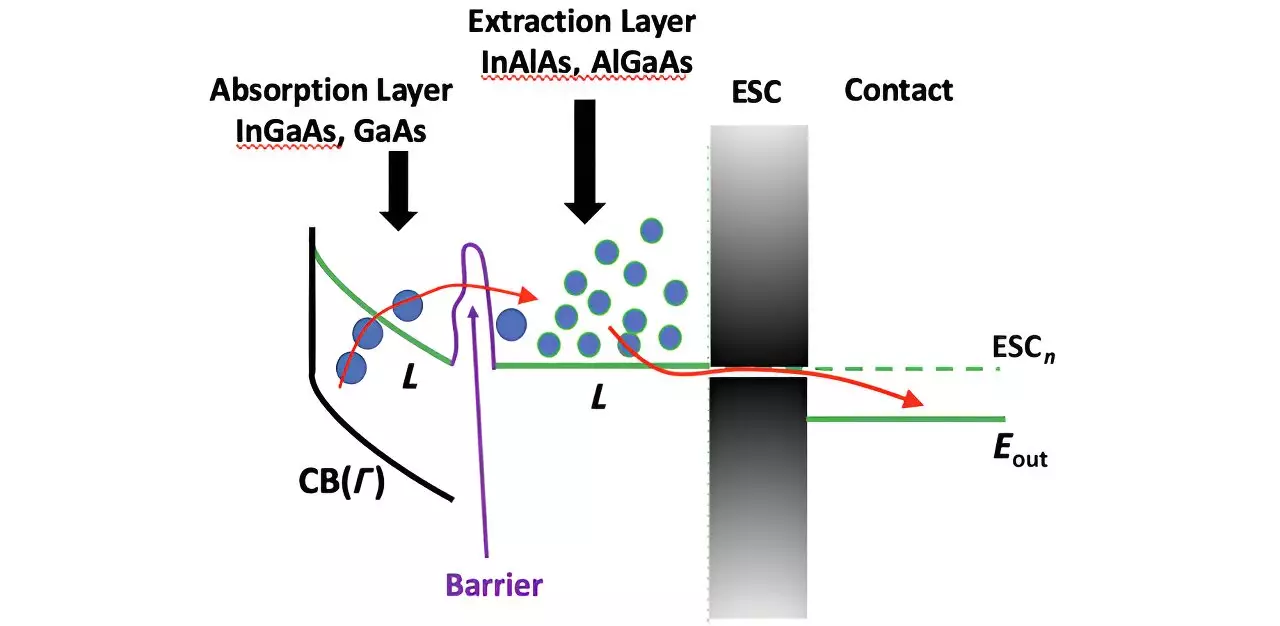Hot carrier solar cells (HCSCs) represent one of the most intriguing advancements in the pursuit of enhancing solar energy efficiency. Introduced several decades ago, these cells have been lauded for their potential to go beyond the Shockley-Queisser efficiency limit, which stands as a theoretical maximum efficiency for conventional single-junction solar cells. The promise of HCSCs lies in their ability to harness the excess energy of hot electrons generated by sunlight, aiming to convert that energy into usable electrical power more efficiently than traditional methods.
However, despite the decades of theoretical exploration, actual deployment of hot carrier cell technology has encountered a host of practical difficulties. The major roadblock remains the rapid extraction of these high-energy hot electrons across the interfaces of different materials. Maintaining the integrity of the hot carrier state long enough for efficient extraction has been a persistent challenge.
Recent advancements in research have centered around the utilization of satellite valleys within the conduction band of semiconductor materials. These satellite valleys allow for the temporary storage of hot electrons, providing an intermediary stage before their eventual extraction. While this concept shows promise in theoretical discussions, hurdles arise due to the heterostructure interfaces between types of materials utilized in HCSCs.
Notable findings indicate the presence of a parasitic barrier during the extraction process, complicating the transfer of electrons. The frustration occurs when the energy bands of the materials in the heterostructure are misaligned. This misalignment can lead to potential electron tunneling—where electrons circumvent barriers—a phenomenon heavily dictated by the complexity of band structures in play.
A recent study published in the Journal of Photonics for Energy has provided new insights into these tunneling dynamics. Using an empirical pseudopotential method, researchers have examined evanescent states and how they underpin the transfer of hot electrons. By calculating energy bands in momentum space, the researchers have offered critical insights into achieving effective hot carrier extraction at heterointerfaces.
The study highlights a particularly significant finding: the tunneling coefficient, which essentially measures the probability of electron tunneling, is notably larger in materials like indium-aluminum-arsenide (InAlAs) and indium-gallium-arsenide (InGaAs). This increased tunneling coefficient arises from distinct energy band mismatches between these materials, further exacerbated by slight surface roughness at the interfaces—which can be as minimal as a few atomic layers. Such roughness proves detrimental, severely impeding efficient electron transfer and correlating with the underwhelming performance often observed in experimental setups utilizing these materials.
Interestingly, the research elucidates that performance improves markedly when a system incorporates aluminum-gallium-arsenide (AlGaAs) in conjunction with gallium-arsenide (GaAs). In these structures, the aluminum composition within the barrier facilitates better energy band alignment, creating degeneracies in the lower energy satellite valleys. This process aids in achieving atomic-level precision during growth, significantly enhancing the tunneling coefficient for electron transfer, which can reach values of 0.5 or even hit 0.88 depending on the AlGaAs composition.
These characteristics lead to a more streamlined and efficient transfer process, paving the way for novel applications of valley photovoltaics that may transcend the limitations imposed by traditional single bandgap approaches.
In light of these findings, there exists a palpable excitement within the research community regarding the future of hot carrier solar cells. As the understanding of tunneling dynamics deepens and the improvements in material engineering proceed, the prospect of overcoming the theoretical efficiency limits of solar energy conversion becomes increasingly viable.
Optimizing structures using materials like AlGaAs and GaAs, while minimizing interface imperfections, could potentially revolutionize solar cell technology. With ongoing research and development, humanity may soon harness the full spectrum of solar energy, turning what was once a theoretical exercise into a practical, efficient, and sustainable energy solution.


Leave a Reply